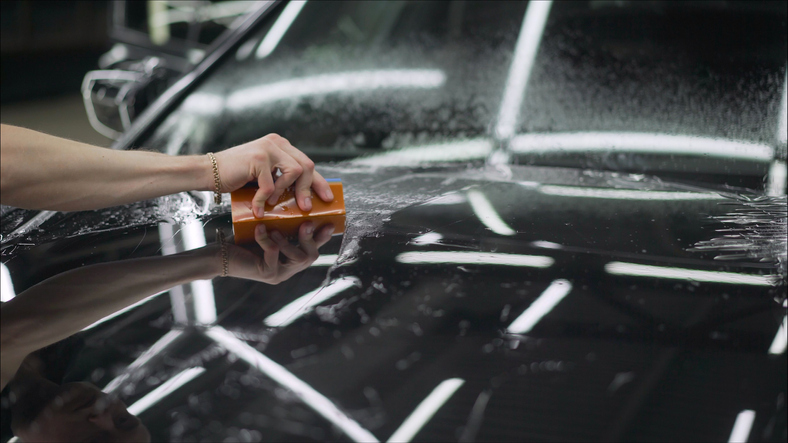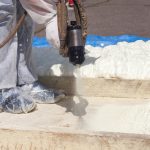Essential Protection Provided by this Versatile Polyurethane Form
In the expansive world of polyurethane-based components, it’s easy to overlook the importance and prevalence of polyurethane coating — a critical element for finishing many products across a wide swath of industries.
A polyurethane coating is a polyurethane layer applied to the surface of a substrate for the purpose of protecting it or adding another element — such as color. These coatings help protect substrates from various types of defects such as corrosion, weathering, abrasion, and other deteriorating processes.
These polyurethane coatings are also customizable. Depending on the desired effect, they can be shiny and glossy, opaque, transparent, or muted in appearance. Their use comes with a host of benefits, including:
- Versatile chemistry makeup
- Toughness and resistance to abrasion and chemicals
- Hardness with flexibility
- Ability to adhere to many types of surfaces and materials
Today we’ll examine some of the many applications and industries using polyurethane coatings and how Linden Polyurethane enhances and ensures the success of your applications in this area with high-quality equipment.
We’re the Polyurethane Experts: Contact us today to learn how Linden Industries can serve as your partner in all things polyurethane.
Essential Uses for Polyurethane Coating
Aerospace
During flight, aircraft — both internally and externally — are exposed to rapid and substantial changes in temperature among the many other challenges presented. Polyurethane foam is used throughout the aircraft to provide insulation for both the craft and its passengers from these fluctuations and to help seal in cabin pressure while also providing a strong sound barrier. However, coatings also play a major role. Water-based polyurethane coatings are used on the exterior for protection against the elements, and acrylic-based polyurethanes do the same for window panes and exterior light coverings.
Automotive
Polyurethane foam sees lots of use in the automotive industry, with applications ranging from seat cushions to the steering wheel to use in body parts such as bumpers, doors, and spoilers. But polyurethane coatings see wide use as well, from scratch resistant paint for the exterior that improves glossiness and maintains color to a coating on windshields and windows to add strength and add protection against fog and other elements. With better color and gloss retention than other coating types, polyurethane has become the preferred solution here.
Construction
The benefits of polyurethane foam used in building and construction is well known. But employing a polyurethane coating is more common and widespread than simply using the solution as a means to finish flooring. Since these coatings are ideal in preventing corrosion and in making materials more durable, many different elements in construction use this coating. Besides flooring, the addition of a coating for use on steel and concrete supports, finished architectural features, and many more such elements makes them stronger, less susceptible to rust, and more resilient to scrapes, scratches, and other physical damage.
Appliances
Polyurethane coating for electronics and appliances (also known as white goods) is used for exterior gloss and color options. While this adds value, the real benefit is the spray coating adds protection against rust and exposure to heat over long periods of time. This preserves both the performance and appearance of the appliance.
Military
Polyurethane, in every military foam application, must be mixed and processed as accurately as possible to ensure its performance remains unwavering at all times. Both man and machine rely on advanced polyurethanes for protection and different types of support in the most extreme conditions. When it comes to coatings, these are important in sealing and exterior protection for aircraft, naval vessels, personal protective equipment for soldiers, to fortify diving equipment, and many other applications.
Chemical Blending Additions: Learn more about Linden’s gas nucleation systems and how they can improve the quality of your polyurethane mixtures.
Make the Most of Your Polyurethane Coating
With so many essential uses, it’s important to account for your coatings with the best equipment possible. Linden Polyurethane has more than three decades of experience of finding and designing the ideal solutions for your polyurethane production environment. Here are the critical parts of the production process for manufacturing and applying polyurethane coating.
Low-Pressure Metering Systems
Low-pressure polyurethane metering systems support a number of applications in which lower volumes, higher viscosities, or differing levels of viscosity between the various chemicals used in a mixture are required. Also, low-pressure polyurethane foam machines are also an ideal choice when multiple streams of chemicals need to be treated differently prior to mixture. Low-pressure polyurethane foam dispensing equipment is often found in a variety of markets, particularly where coating, adhesives, sealants, and elastomers are needed.
Polyurethane Spray Equipment
This equipment can find a home in numerous industries and applications, but it is critical in surface protectant application in manufacturing, waterproofing surfaces and protecting concrete in construction, reinforcing structures in the military, and corrosion protection and tank linings in the chemical industry. For any coating application, you’ll need proper polyurethane spray equipment.
Linden Polyurethane has partnered with Isotherm AG — a leading innovator of polyurethane processing equipment and machinery — to develop the PSM 700 spray machine. This advanced system can be fitted with multiple mix head types, can be used in facilities or in the field, and has strong continuous outputs and various mixing ratios.
Spray-Style Mix Heads
A spray-style mix head does exactly what it sounds like: distributes material at length, whether via a handheld sprayer or a robotic mount. As many spray materials can be abrasive, the spray-style mix head can also be coupled with ceramic mixing chambers that resist wear and tear. Each spray-style mix head is highly engineered to help organizations achieve their polyurethane distribution goals. Thanks to the precision of the Isotherm PSM 700 metering and temperature control system, the chemicals arrive at the spray head via heated hoses and provide a perfect mix — even with different mixing ratios. This mix head is also mechanically self-cleaning, with no solvents or flushing required.
Explore more mix head options: Get a look at Linden’s full range of equipment options in this realm here.
Cover All Your Polyurethane Coating Needs with Linden Polyurethane
For more than 35 years, Linden Polyurethane has served as a leading partner in the global polyurethane industry. We engineer a broad portfolio of high-pressure metering systems, spray machines, bulk, blending and storage systems, pentane, and gas infusion equipment and systems. We also support and specialize in critical applications in the aerospace, medical, and military industries as well as in construction, sporting goods, automotive, and appliances.
Application-driven in everything we do, we tailor your solution specifically for your unique processing needs to ensure you’re able to meet production goals as quickly and efficiently as possible. All of our polyurethane foam dispensing equipment is also backed by best-in-class service and support.





